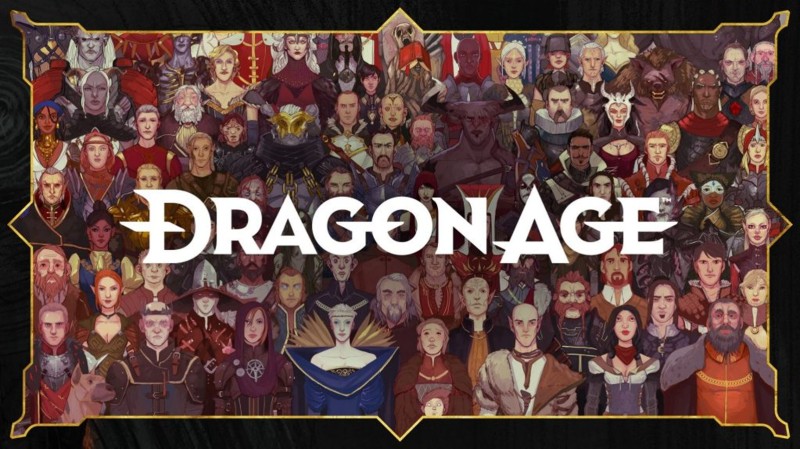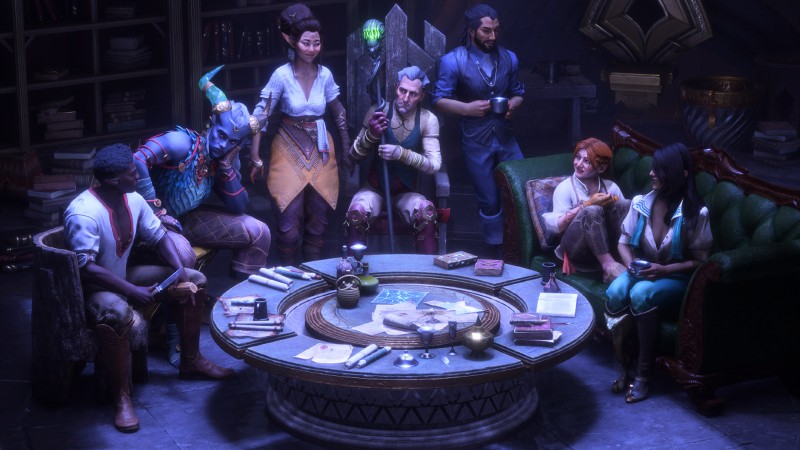With 10 years between Dragon Age: Inquisition (2014), the last entry in the series, and the upcoming Dragon Age: The Veilguard, the latter has a lot to offer. It’s both a sequel to a beloved game from a decade ago in one of BioWare’s most beloved series, and the first BioWare game since the launch of Anthem (2019), a live-action multiplayer effort that EA abandoned less than two years later.
Curious about the pressure surrounding Veilguard’s release, I spoke to BioWare about the lessons learned after following Inquisition and what it’s been like returning to the series so many years later.

“We started in pre-production,” BioWare CEO Gary McKay told me when I asked him what BioWare’s guiding principle was for developing Veilguard. “We spent a lot of time iterating and experimenting and innovating on different aspects. At one point, it was multiplayer. We looked closely at multiplayer, but we felt like we couldn’t really go back to our roots. And when we asked ourselves what game we wanted to make, we really wanted to go back to our roots, which was incredible storytelling. It’s about unforgettable characters and having the opportunity to impact the world.”
“We really felt like multiplayer wasn’t going to do that. But the single-player RPG is really what we wanted to spend our time on, so after spending this time in pre-production, really honing the vision for this game, and having the opportunity to deliver on the creative promise of this game, we’re really excited about what’s coming.”
According to McKay, Veilguard combines seasoned veterans with new voices and perspectives, which is “really important to this game.” For example, people like former Dragon Age producer Mark Darrah, who left the studio in 2021 but is now a consultant on Veilguard, and creative director John Epler have decades of experience at BioWare together. They work every day with people like game director Corinne Busche, who joined BioWare shortly after Anthem launched (but brings a love of Dragon Age since the series began in 2009), to develop the game we’ll be playing this fall.
“You have to have different perspectives and backgrounds,” McKay says. “If you put a group of people together who have only experienced one thing, that’s not where you’re going to see creativity. That’s not where innovation is born. Innovation is born when you have … that past history and you mix it with new voices and perspectives.”
Darrah has been with BioWare since the early days of Baldur’s Gate, and when I ask him how the studio has progressed from that series to Dragon Age, he says it’s incredible. “What’s incredible about Veilguard is that it’s the game where we finally said out loud that BioWare’s greatest strength is telling stories through characters. If you go back to Baldur’s Gate 1 and Baldur’s Gate 2, those games tell stories through characters, but there was no intention behind that. And in this game, we’re finally putting that intention forward, putting the characters first, building the game around that, around those character moments, which is really the best way BioWare knows how to tell stories.”
I ask Darrah if there’s anything Veilguard does that BioWare wanted to do in previous games but couldn’t, and he says, “Telling a story through animation.” In previous games, every character moves “exactly the same way” and everyone is consistent in that way, he says. “If you put on armor and you put it on Alistair, you look exactly the same standing next to each other.”
“We’re now able to make the character present in the visuals and movements even when you customize them, which just wasn’t possible in the past.”
He also mentions BioWare’s confidence in its game development engine for Veilguard, which, like Inquisition, uses EA’s proprietary Frostbite engine. “Dragon Age: Origins and Dragon Age II did what they could with the technology they had; Dragon Age: Inquisition did a great job using Frostbite, regardless of the engine,” Darrah says. “But with this game, you understand the engines better over a longer period of time, but also, the technology of the hardware that the game is going to be played on in the future is capable of doing a lot more things[and]executing them visually to a degree that just wasn’t possible in the past.”
On the Inquisition
With a 10-year gap between Inquisition and Veilguard, BioWare has to strike a balance between catering to longtime fans of the series and newcomers jumping into it for the first time. Epler says the studio has worked hard to make sure Veilguard feels respectful and referential to its predecessors without making it feel like you need to have played Inquisition, Dragon Age II, or Origins to fully understand what’s going on.
“While there are references, there are times where we do callbacks, it’s really a separate story, a separate continuation with a different cast, with different characters,” he says. “Historically, Dragon Age has always had a different cast per game, which gives us a lot of freedom in terms of what we want to build on from the past and what we want to really bring that’s new and forward-thinking.”
Darrah adds that the events of Veilgaurd are happening for a narrative purpose for the future of the series. “It’s a game that takes the concept of Inquisition, gives it its own twist, has its own characters, takes its own direction, but continues its momentum into the future,” he says.
“Dragon Age has always been about change. Every game has had a new protagonist, and it’s always explored its own space, and this game is no exception.[Veilguard]does a good job of bridging that gap. True Dragon Age fans have made a lot of very educated guesses, and some of them are pretty accurate about where the franchise is going. What we need to make sure is that people who may have only played Inquisition really understand what the franchise is all about — it’s about a new protagonist, it’s about change, it’s about evolution — and don’t come in expecting a direct sequel to a game they’ve played and then been disappointed with. This game is something new, something that evolves, something bigger than what’s come before, like every game (…) before it.”
For Busche, balancing newcomer and fan expectations in Veilguard comes down to managing what-ifs. She explains that Veilguard takes place in a part of Thedas that BioWare has only hinted at. The team has talked about the Grey Warden stronghold of Weisshaupt, the depths of Arlathan Forest, the coast of Rivain, the great necropolis of Nevarra, and Minrathous, but now players will finally be able to visit the locations of those stories.
“We have a rich history of world-building within the IP, so existing players will be familiar with these places and very eager to go there and explore their mysteries,” Busche tells me. “But for our new players, we don’t assume they know anything about these places. I would say that applies to the characters as well; we’ve taken great care in how we introduce each companion and major character in the game’s story (with that in mind).”
Epler tells me that Veilguard differs from Inquisition and other Dragon Age games in that Rook, the player character, can’t save the world without the characters he meets on his journey.
“Dragon Age has always been about characters, but to some extent it almost feels like we got lucky,” he says. “Inquisition is a story where, ultimately, you, the main character… have the biggest role to play. We wanted to tell a story this time where it’s literally impossible to save the world without these characters. But beyond that, we also wanted to give them their own story arcs that can run parallel to the main story and give them that kind of deep narrative that our fans really enjoy.”
While biased for obvious reasons, Epler says Veilguard is his favorite Dragon Age game he’s worked on (and he’s worked on all of them, starting as a QA tester on Origins). He says one reason for this is the storytelling of the characters, companions, and relationships.

“They have their friendships, their rivalries, and they build on that concept,” he tells me. “You don’t just put together a group of people who will do whatever you say. You put together a family, and that becomes the core of what the Veil Keep is about. It’s about taking this group, this found family, and saving the world, alongside them.”
For more on the game, including exclusive details, interviews, video features, and more, click the Dragon Age: The Veilguard center button below.